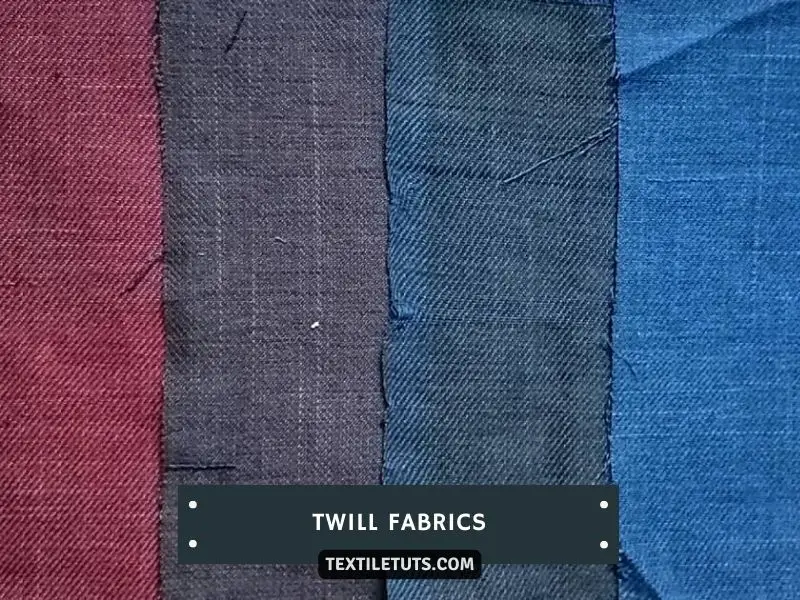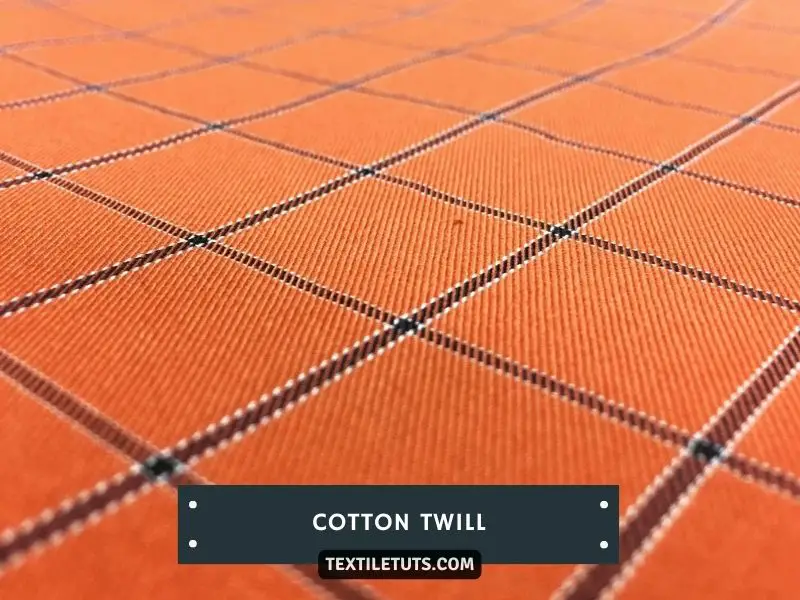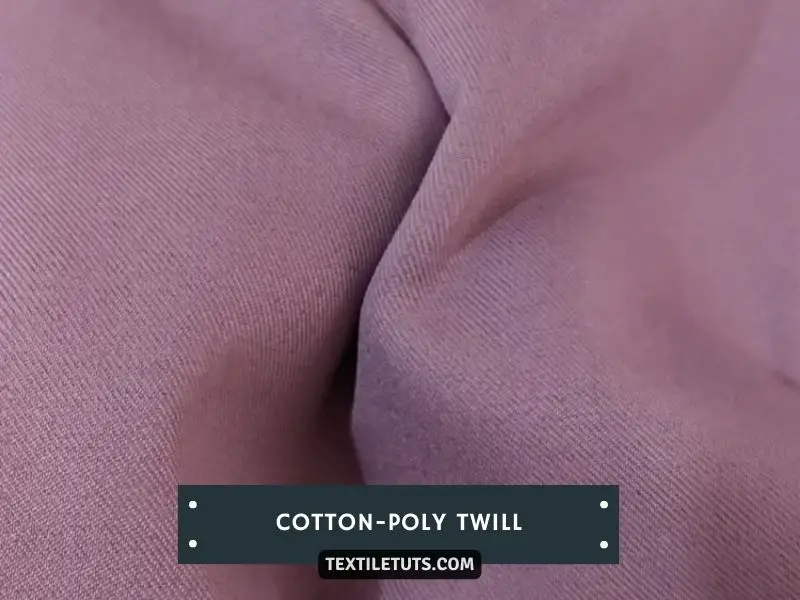Twill Shrinkage: What You Need to Know
If you’re like most people, you probably have a few pieces of Twill clothing in your closet. But did you know that twill can shrink? In this blog post, we’ll discuss how much twill shrinks and how to prevent it from happening. We’ll also take a look at some of the best ways to care for your Twill garments so that they last longer.
What is Twill Fabric?

Twill is a type of fabric that is made from cotton, wool, or a blend of both. It is usually woven in a diagonal pattern, which gives it its characteristic “Twill” look. Twill is known for its durability and resistance to wrinkles, making it a popular choice for clothing and upholstery.
Does Twill Shrink?
The answer is yes, Twill can shrink. But how much it shrinks depends on the fabric and the weave. For example, 100% cotton Twill will shrink more than a 50/50 cotton/polyester blend. And a tightly woven Twill will shrink less than a loosely woven one.
Does Twill Shrink in the Dryer?
Twill can shrink in the dryer, but it’s less likely to happen if you use low heat and take the garment out of the dryer while it’s still damp. If you must put your twill garment in the dryer, use a cool setting and don’t over-dry it.
Does a Shirt Made of Twill Shrink When Washed?
Shirts made of twill tend to shrink less when washed, as the fabric is more resistant to shrinking than other fabrics. However, it is still possible for twill shirts to shrink slightly when washed, so it is always best to follow the care instructions on the garment label.
Generally, washing a Twill shirt in cold water and air drying it will help to prevent any significant shrinkage.
Does Twill Shrink When Washed?
Yes, a shirt made of Twill can shrink when washed. The amount of shrinkage will vary depending on the fabric and the weave. 100 percent cotton Twill shrinks more than a 50/50 cotton/polyester blend, for example. Make sure to follow the garment’s care instructions to prevent shrinkage.
How Much Tencel Yarn Shrink Twill Weave?
Tencel is a type of rayon, and it’s made from wood pulp. It’s often used in blends with other fabrics like cotton or wool. Tencel shrinks less than cotton, so if you’re worried about shrinkage, look for a Twill fabric that has Tencel in it.
What is Cotton Twill?

Cotton twill is a fabric made from cotton yarns that are spun in a way that gives the fabric a diagonal rib. It’s heavier than other cotton fabrics and has a sturdier feel. It’s most often used for pants, jackets, and skirts.
Does Cotton Twill Shrink?
When washing a Twill garment, it is best to use cool water and to avoid over drying. Additionally, 100% cotton Twill garments will shrink more than those made with a 50/50 cotton/polyester blend to minimize shrinkage, follow the care instructions for your clothing.
What is Core Twill?
Core Twill is a sturdy and hefty cloth produced from cotton yarns. It has a diagonal rib, which distinguishes it from other cotton fabrics. Pants, jackets, and skirts are the most common applications of this fabric.
Does Core Twill Shrink?
Core twill will also shrink when washed, though the amount of shrinkage is usually less than with cotton twill. Core twill shrinks between 0% and -0.75%. The best way to avoid shrinkage is to wash your core twill in cold water and air-dry it. If you must wash it in hot water, use a delicate cycle and low heat.
Cotton-Poly Twill

Cotton-poly twill is a blend of cotton and polyester. It has the look and feel of cotton twill, but it’s less likely to shrink. It’s a good choice for garments that will be washed and dried in a machine.
Does Cotton Poly Twill Shrink Less Than Cotton Twill?
The answer to this question is yes. Cotton-poly Twill shrinks less than cotton twill, between 0% and -1.5%. This makes it a good choice for garments that will be washed and dried in a machine.
How to Avoid the Shrink of Twill?
If you’re looking to avoid the shrinking of your Twill fabric, there are a few things you can do.
- First, make sure to wash your fabric in cold water and use a mild detergent.
- Secondly, air dry your fabric rather than using a dryer. If you do need to use a dryer, make sure to use the lowest heat setting possible.
- Finally, if you’re still concerned about shrinkage, you can always opt for a preshrunk fabric. Cotton twill is typically more resistant to shrinking than other types of fabrics, but it’s always best to err on the side of caution.
How to Wash Twill Properly?
- The best method to clean twill is with cold water and a mild detergent. The fabric may be air-dried, or if you need to use the dryer, use the lowest heat setting possible. If shrinkage remains an issue, consider purchasing a pre-shrunk fabric.
- Cotton Twill shrinks less than other textiles, but it’s best to be cautious. When in doubt, follow the care instructions on the garment’s label. With proper care, your twill clothing should last for many years.
Tips for Your Maintaining Your Twill Fabric
- Use cold water and mild detergent when washing.
- Air dry or use the lowest heat setting possible in the dryer.
- Purchase a pre-shrunk fabric if shrinkage is a concern.
- Follow the care instructions on the garment’s label for best results.
Frequently Asked Questions
Does twill shrink in the wash?
Cotton twill does shrink when it is washed. The amount of shrinkage will depend on the type of cotton twill and the washing conditions. Generally, cotton twill will shrink between two and five percent.
Do twill jeans only shrink and not stretch after washing?
While it is true that cotton twill denim tends to shrink more than some other types of denim, it is important to keep in mind that they also tend to stretch more during wear.
This is because they are designed with a diagonal weave that runs from front to back, meaning that they will also stretch out from side to side during wear. Therefore, if you are wondering why do jeans get tight after washing, the answer is simple!
Can you shrink cotton twill?
Cotton twill can be shrunk, although the amount of shrinkage will depend on the type of cotton twill and the washing conditions.
Is twill better than cotton?
There is no definitive answer to this question as it depends on personal preferences. Some people may find that twill is better than cotton because it is more durable and has a smoother texture, while others may prefer cotton for its breathability and softer feel. Ultimately, it is up to the individual to decide which fabric is best for their needs.
Does twill fade?
Like all fabrics, twill may fade over time. The amount of fading will depend on the color of the fabric and the amount of exposure to sunlight or other light sources. To help prevent fading, it is recommended to wash twill fabrics in cool water and to avoid using bleach.
Is twill a warm fabric?
Twill is a relatively warm fabric due to its dense weave. It is not as breathable as some other fabrics, such as cotton, but it will still allow some air circulation. Twill is a good choice for winter clothing because it will help to keep you warm without being too heavy.
Is twill more durable than denim?
Twill is generally more durable than denim because of its dense weave. Twill is less likely to rip or tear than denim, making it a good choice for clothing that will see heavy use. However, denim is still a relatively durable fabric, and it may be more comfortable for some people.
Is Herringbone a twill?
Herringbone is a type of twill fabric. Twill fabrics have a diagonal weave that gives them a characteristic “Twilled” appearance. Herringbone is a specific pattern that is created when the twill weave is turned in different directions. This gives the fabric a chevron-like appearance.
Is twill lighter than canvas?
Twill is typically lighter than canvas because it has a tighter weave. This makes twill a good choice for clothing that needs to be durable but not too heavy. Canvas is a heavier fabric, which makes it better suited for items such as tents and bags.
What is the difference between denim and twill?
Denim is a type of twill fabric, but it has a looser weave than most twill fabrics. This makes denim less durable than other twill fabrics, but it also makes it more comfortable to wear. Denim is also typically heavier than other twill fabrics, making it better suited for items such as jeans and jackets.
What is combined twill?
Combined twill is a fabric that is made from two or more different types of yarn. The yarns are combined in the weaving process to create a fabric with unique properties. Combined twill fabrics are often used for clothing that needs to be both durable and comfortable.
Conclusion
So here you have it! Everything you need to know about twill fabric shrinkage.
In short, twill is a durable and warm fabric that is often used for clothing such as jeans and jackets. It can shrink in the wash, so be sure to read the care label before washing. Twill is also available in a variety of colors and patterns, so you can find the perfect fabric for your needs. Thanks for reading!

